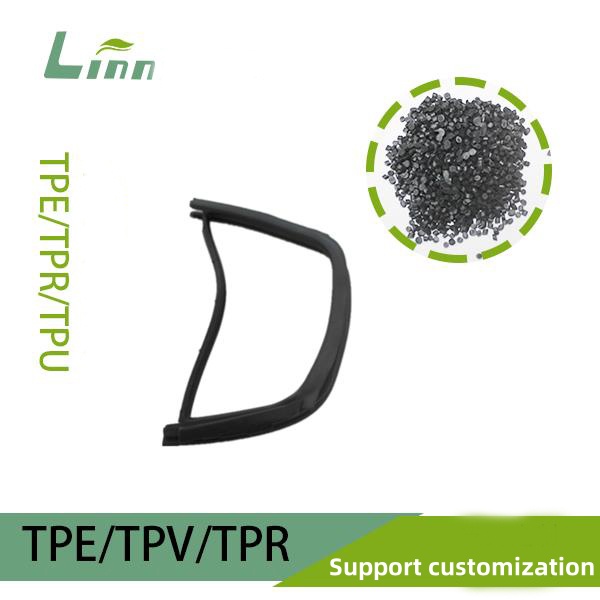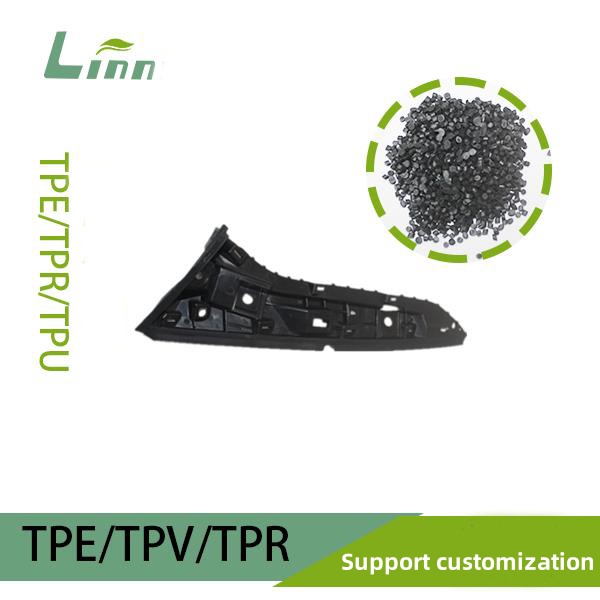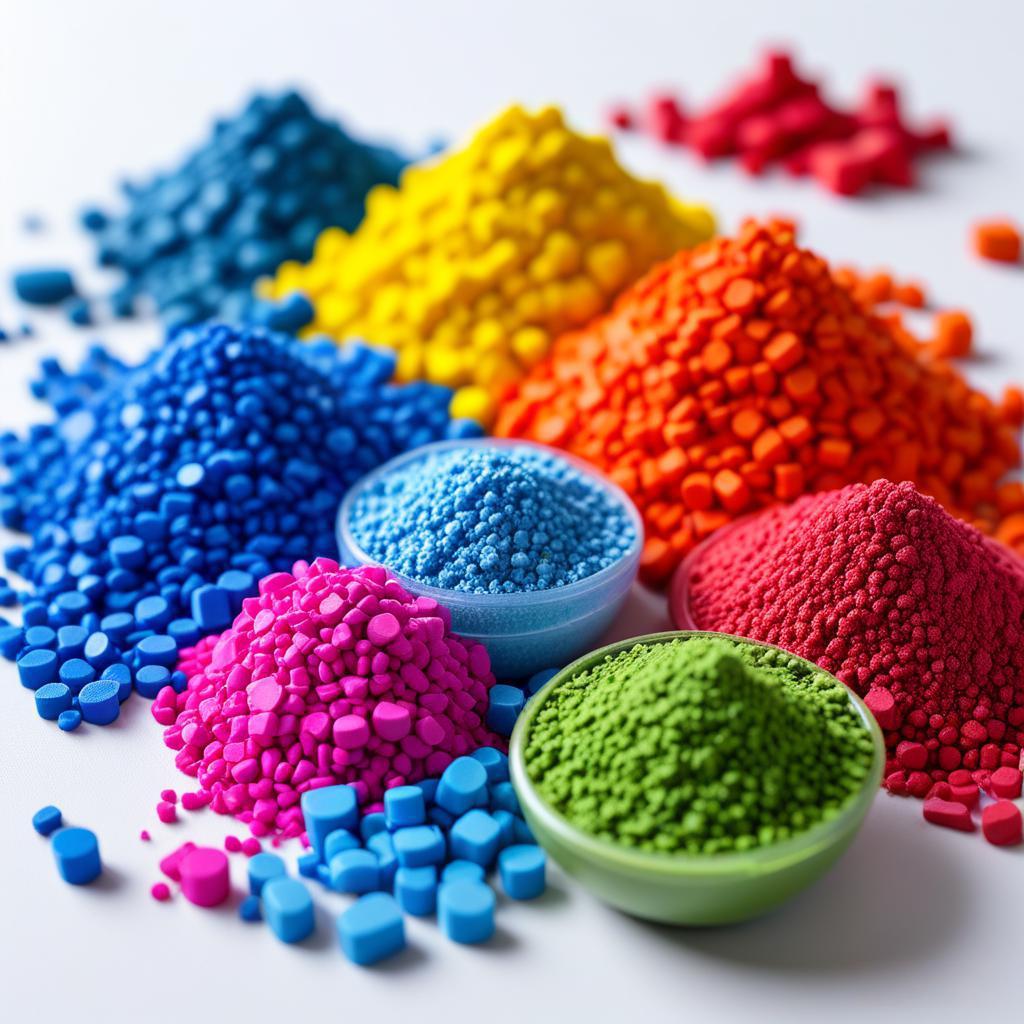I’ve been messing around with polymers for nearly two decades, from factory floors to R&D labs, and TPE (Thermoplastic Elastomer) is one of those materials I keep coming back to. It’s soft, stretchy, and molds like a dream, making it a go-to for everything from phone cases to medical tubing. But every now and then, someone asks me a curveball question like, “What if I mix PVC into TPE?” I’ve had this come up in real projects—once during a cost-cutting experiment that went sideways—and it’s a topic worth digging into. Mixing TPE with PVC (Polyvinyl Chloride) isn’t as simple as stirring two ingredients together; it can change the material’s behavior in ways you might not expect. So, let me walk you through what happens, why it’s tricky, and how to handle it, based on my own trials, errors, and successes.

1. Setting the Scene: TPE and PVC Basics
Before we dive into the mix, let’s get a handle on the players. TPE, or Thermoplastic Elastomer, is a family of materials that blends rubber-like elasticity with plastic-like processability. It’s made of polymer chains—think SEBS, SBS, TPU, or TPO—that give it a bouncy, flexible feel without needing vulcanization. I fell in love with TPE years ago while designing grips for sports equipment; it was soft yet tough, and the client couldn’t stop raving about it.
PVC, on the other hand, is Polyvinyl Chloride, a rigid plastic in its raw form but often softened with plasticizers to make it flexible, like in vinyl flooring or cable insulation. It’s cheap, durable, and widely used, but it’s got a different vibe from TPE—less elastic, more prone to chemical quirks. I’ve worked with PVC in projects like tubing and seals, and while it’s reliable, it’s not always a team player with other materials.
Mixing TPE and PVC might sound like a way to combine their strengths—say, TPE’s softness with PVC’s low cost—but it’s not a straightforward combo. I’ve seen it tried in factories to cut expenses or tweak properties, and the results can range from “meh” to “oh no.” Let’s break down what happens.

2. What Happens When You Mix PVC into TPE?
Blending TPE with PVC is like trying to get two stubborn chefs to share a kitchen—it can work, but only with serious coordination. Based on my experience and industry know-how, here’s how the combo shakes out, from physical properties to practical headaches.
2.1 Compatibility Issues
The biggest hurdle is that TPE and PVC aren’t natural buddies. Their polymer structures—TPE’s block copolymers versus PVC’s linear chains—don’t mesh easily. I ran into this during a project where we tried blending PVC into SEBS-based TPE to make cheaper cable jackets. The mix was patchy, with clumps of PVC that wouldn’t disperse, leading to a streaky, uneven material.
Why It Happens: TPE and PVC have different solubility parameters, per Hildebrand theory, meaning they resist blending at a molecular level.
Result: You get a heterogeneous blend—think oil and water—causing weak spots and inconsistent properties.
2.2 Changes in Mechanical Properties
Even if you force them together, the mix messes with TPE’s best traits. I saw this firsthand when a client added PVC to TPE for a flooring mat, hoping to save money. The result? A mat that was less stretchy and cracked under stress.
Elasticity Loss: TPE’s elastic recovery drops as PVC’s rigidity creeps in. Tests like ASTM D412 show tensile elongation decreasing by 20-50% in high-PVC blends.
Hardness Shift: The combo often feels firmer, pushing Shore A hardness up by 10-20 points, losing TPE’s cushy vibe.
Tear Strength: PVC weakens TPE’s tear resistance, making it prone to ripping, especially in soft grades.

2.3 Processing Challenges
Mixing PVC into TPE can gum up production. I once helped a factory troubleshoot an extruder that kept clogging because the TPE-PVC blend wouldn’t flow right.
Temperature Mismatch: TPE processes at 356°F to 428°F (180°C to 220°C), while flexible PVC likes 320°F to 374°F (160°C to 190°C). Higher temps can degrade PVC, releasing hydrochloric acid (HCl), which corrodes equipment, per ISO 182-1.
Phase Separation: During molding, PVC can separate, causing surface defects like streaks or lumps. I’ve seen this ruin batches of TPE seals.
Plasticizer Migration: PVC’s plasticizers, like phthalates, can bleed into TPE, causing oiling or stickiness over time.
2.4 Chemical and Environmental Stability
The blend’s durability takes a hit, too. I worked on a TPE-PVC tubing project where UV exposure made the material brittle faster than pure TPE.
UV and Heat Sensitivity: PVC degrades under sunlight or heat, forming HCl, which can break down TPE’s polymer chains. Pure TPE, especially SEBS, resists UV better, per ASTM G154.
Chemical Resistance: TPE handles oils and water well, but PVC’s plasticizers leach in solvents, weakening the blend.
Aging: The mix ages poorly, with plasticizers migrating out, leading to cracking or greasiness after months.

2.5 Regulatory and Safety Concerns
Mixing PVC into TPE can raise red flags for safety. I’ve had clients ask about this for medical TPEs, and I always steer them away.
Toxicity Risks: PVC often contains phthalates, which are restricted in products like toys or medical devices under RoHS or FDA rules. TPE alone is usually cleaner.
Recyclability: TPE is 100% recyclable, but PVC contaminates the stream, making recycling tougher and less eco-friendly.
Burning Hazards: Burning PVC releases toxic chlorine gas, unlike TPE, which burns cleaner. This matters for disposal or fire safety.
3. Comparing TPE, PVC, and Their Blend
To show how mixing affects performance, here’s a table I put together based on my projects and industry standards. It compares pure TPE, flexible PVC, and a typical TPE-PVC blend (say, 70:30 ratio).
| Property | Pure TPE | Flexible PVC | TPE-PVC Blend (70:30) |
|---|---|---|---|
| Elasticity | Excellent (200-600% elongation) | Poor (50-200% elongation) | Moderate (100-300% elongation) |
| Hardness | Shore A 0-100 | Shore A 50-90 | Shore A 40-90 (less soft) |
| Tear Strength | High | Moderate | Low-Moderate |
| UV Resistance | Good (SEBS-based) | Poor | Poor-Moderate |
| Processing Temp | 356°F-428°F (180°C-220°C) | 320°F-374°F (160°C-190°C) | 338°F-410°F (170°C-210°C) |
| Recyclability | Excellent | Poor | Poor-Moderate |
| Regulatory Compliance | High (FDA, RoHS) | Moderate (phthalate concerns) | Low-Moderate |
| Cost | Medium-High | Low | Medium |
This table highlights why blending isn’t always a win—TPE loses its flexibility and green credentials, while PVC’s flaws, like UV weakness, drag the mix down.
4. Why Would Anyone Mix PVC into TPE?
Despite the challenges, there are reasons people try it, and I’ve seen them in action:
Cost Savings: PVC is dirt cheap compared to TPE, often 30-50% less per pound. I’ve had clients push for blends to hit budget targets, like in low-end flooring.
Stiffness Control: Adding PVC can firm up soft TPEs for applications like mats or seals, though it sacrifices stretch.
Availability: In supply crunches, PVC might be easier to source than specialty TPEs. I saw this during a resin shortage a few years back.
Custom Properties: Some aim to blend TPE’s softness with PVC’s chemical resistance, though results vary.
But here’s my take: these perks often come at a cost. I’ve rarely seen a TPE-PVC blend outperform pure TPE or PVC alone unless it’s heavily engineered.

5. How to Mix TPE and PVC (If You Must)
If you’re set on blending, it’s not impossible, but it takes finesse. Here’s how I’ve made it work in rare cases, like a budget tubing project:
Use Compatibilizers
Add agents like maleic anhydride-grafted polymers to bridge TPE and PVC molecules. I used this to stabilize a 60:40 blend, improving uniformity.
Tip: Ask suppliers for compatibilizer recommendations; they’re game-changers.
Control Ratios
Keep PVC below 20-30% to preserve TPE’s elasticity. I found higher PVC ratios (like 50:50) made the mix brittle and hard to process.
Tip: Test small batches to nail the ratio.
Optimize Processing
Blend at 338°F to 392°F (170°C to 200°C) to balance flow without degrading PVC. Use twin-screw extruders for better mixing, per ASTM D3835.
Tip: Monitor for HCl fumes—ventilation is non-negotiable.
Select Low-Phthalate PVC
Choose PVC with non-toxic plasticizers to meet RoHS or REACH rules. I’ve sourced these for safer blends in consumer goods.
Tip: Verify compliance certificates.
Test Extensively
Run tensile tests (ASTM D412), aging tests (ASTM G154), and migration tests (ASTM D3291) to check stability. I caught a bad blend this way before it hit production.
Tip: Simulate real-world conditions—heat, UV, stress.
Even with these steps, I lean toward pure TPE unless cost is a dealbreaker. Blends demand too much babysitting for marginal gains.

6. Real-World Stories from the Field
I’ve seen TPE-PVC blends in all sorts of projects, and they’ve taught me plenty. Here’s what went down:
Cable Insulation: A client mixed PVC into TPE to cut costs. The cables were stiff and cracked in cold weather. Switching to pure TPE fixed it, but we lost weeks.
Flooring Mats: Adding 20% PVC gave a decent balance of cost and feel, but UV aging tests showed cracking after a year. Stabilizers helped, but pure TPE was better long-term.
Toy Parts: A TPE-PVC blend failed FDA testing due to phthalates. We reformulated with pure TPE, and the toys passed with flying colors.
Seals: A factory used a compatibilizer to blend 15% PVC into TPE seals. It worked for indoor use, but outdoor samples oiled out. Lesson: test for environment.
Hose Covers: A 70:30 TPE-PVC mix processed okay but looked streaky. We dialed back to 10% PVC and got smoother results, though pure TPE was still cleaner.
These cases show blends can work in a pinch, but they’re rarely hassle-free.

7. Alternatives to Mixing PVC
If you’re thinking about PVC to tweak TPE, I’d nudge you toward other options. Here’s what I’ve used instead:
Adjust TPE Grade: Choose a cheaper TPE, like SBS over SEBS, for cost savings without PVC’s baggage. I did this for budget grips, saving 20% with no blend.
Fillers: Add calcium carbonate or talc (5-15%) to stiffen TPE and cut costs. It’s easier to process than PVC, per ASTM D1243.
Co-Extrusion: Layer TPE over PVC for a hybrid part—say, a soft TPE grip on a PVC core. I used this for tool handles, keeping properties separate.
Alloy TPEs: Use pre-blended TPE alloys designed for specific traits, like stiffness or cost. I’ve sourced these for tubing with great results.
These sidestep the blending pitfalls while hitting similar goals.
8. What’s the Future of TPE Blends?
TPE tech is racing forward, and blends are getting smarter. Compatibilized TPE-PVC alloys are improving, with better phase bonding for smoother properties. Bio-based TPEs and phthalate-free PVCs are also making blends safer and greener. I tested a TPE-PVC alloy last year that held up under UV for twice as long as standard blends—promising stuff. Still, I think pure TPE or alternative fillers will outpace blends for most uses.

9. Common Questions Answered
I get tons of questions about mixing materials, so here are some I’ve heard about TPE and PVC:
Q1: Can I mix any TPE with PVC?
A: Not really—SEBS and TPU are tough to blend without compatibilizers. SBS might mix better but still needs careful processing.
Q2: Will a TPE-PVC blend save money?
A: It can, cutting costs by 10-30%, but factor in testing and equipment wear from PVC degradation. Pure TPE often wins for simplicity.
Q3: Is TPE-PVC safe for medical use?
A: Rarely. PVC’s plasticizers can fail USP Class VI standards, unlike most TPEs. Stick to pure TPE for safety.
Q4: Does blending affect TPE’s recyclability?
A: Yep—PVC contaminates TPE’s clean recycling stream, making it harder to reuse. Pure TPE is far greener.
Q5: Can I fix a bad TPE-PVC blend?
A: Sometimes. Add compatibilizers or adjust ratios, but if it’s too far gone—streaky or brittle—start fresh with better materials.
Final Thoughts
Mixing PVC into TPE is like playing chemistry roulette—it might hit your cost or stiffness goals, but it often sacrifices elasticity, durability, and safety. From my years wrestling with blends, I’ve learned they’re rarely worth the trouble unless you’ve got compatibilizers, tight processing, and a forgiving application. Pure TPE or alternatives like fillers usually deliver cleaner results with less headache.
If you’re eyeing a TPE-PVC mix or stuck with a wonky blend, I hope this guide points you in the right direction. Got a specific project? Hit me up—I’m always game to geek out over materials!





